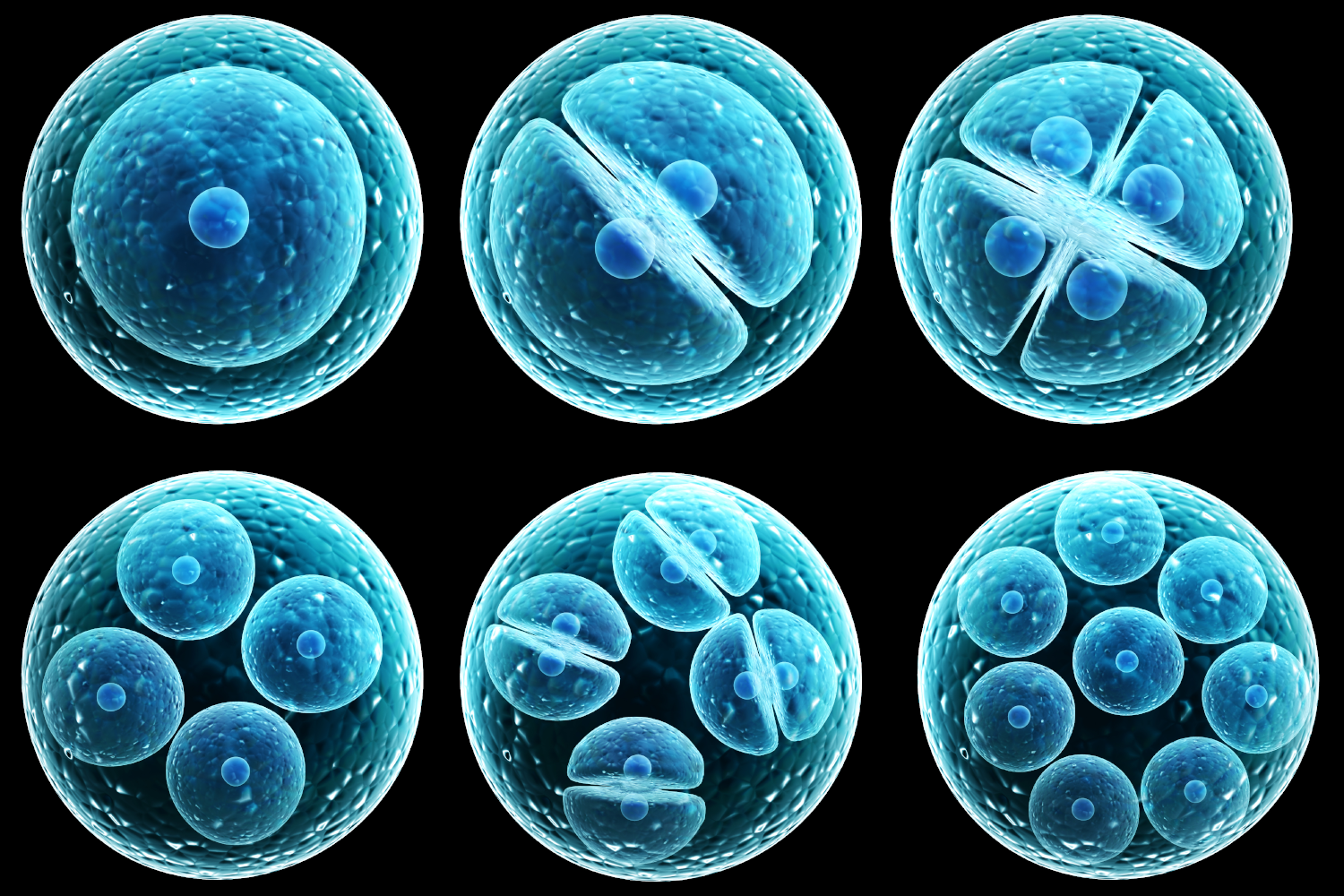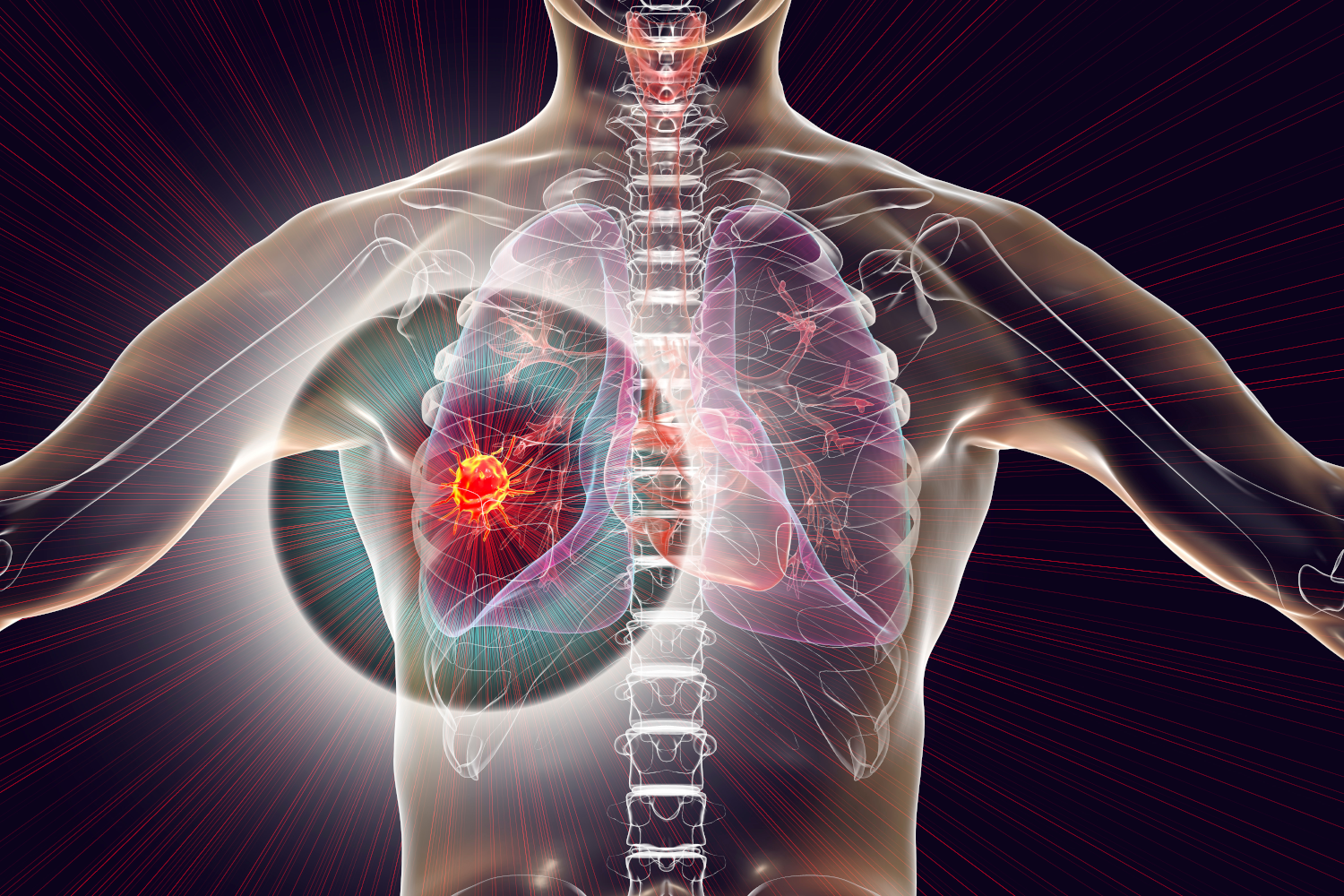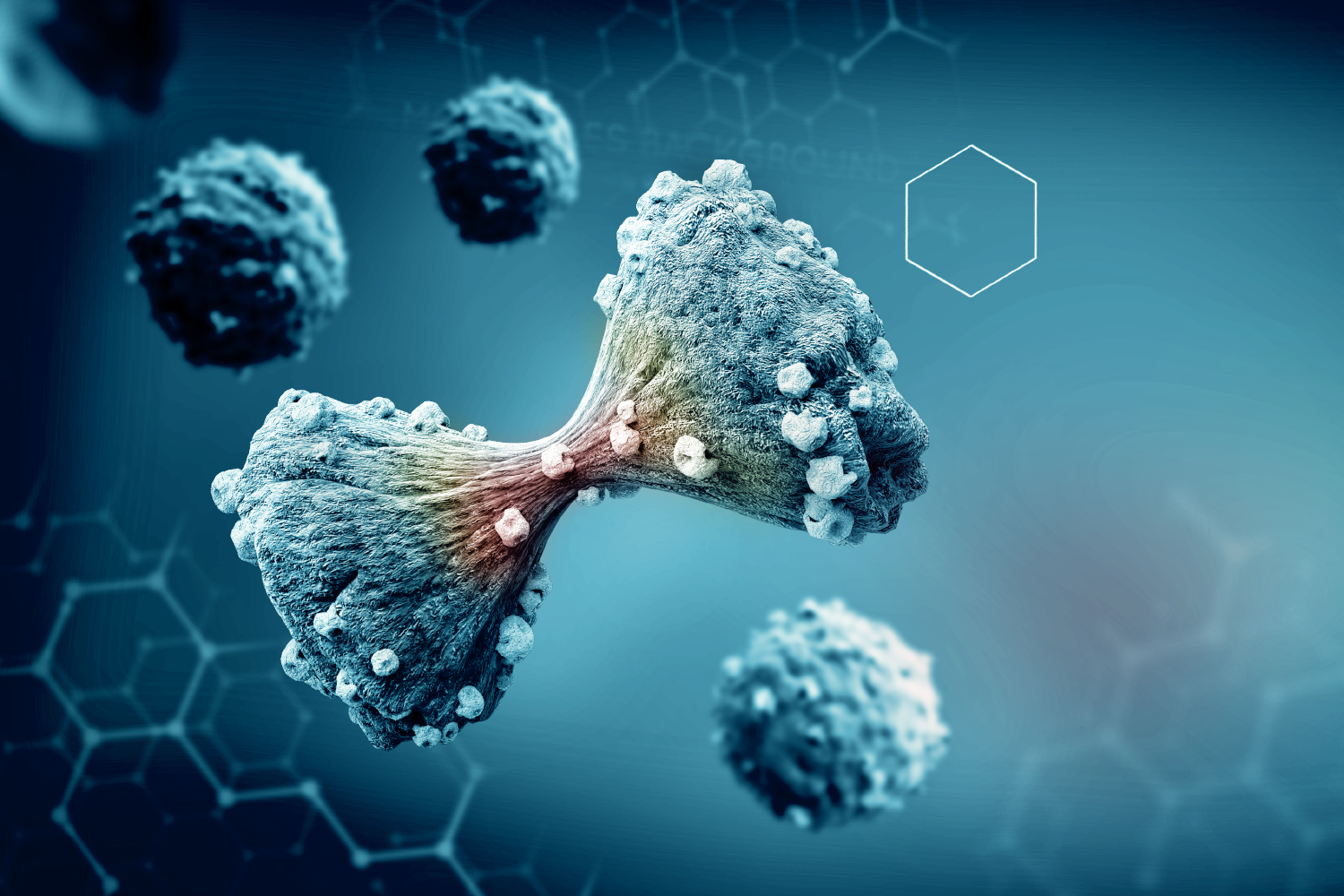Cancer cells can now grow anywhere. Normal cells can only grow and divide in the tissue environment where they normally come from, but it turns out these genes that cause cancer make cells able to divide anywhere. So, instead of becoming specialists, they become generalists where they can divide in crowded environments by themselves, in your blood, anywhere. And this unique ability is really kind of amazing and quite hard for cancer cells. So now we’ve discovered a link between the genes that cause cancer and its ability to divide under different environments, I think the really exciting prospect would be to identify treatments that specifically block this unique ability for cancer cells to generate a lot of force when they go into division, to swell up, to make the space divide in two, which is something that normal cells don’t do. So, if we could target that, you might just kill cancer cells because normal cells do division in this very different way.
Buzz Baum
Cancer: the selfish cell
Buzz Baum, Cell Biologist at the MRC Laboratory of Molecular Biology in Cambridge, explains how cell division goes wrong to cause cancer.Key Points
- • All our tissues are made by cells dividing to become two.
- • Diseases like cancer occur when cell division goes wrong.
- • Cancer cells are selfish individuals that can grow anywhere, while normal cells can only grow and divide in the tissue environment where they normally come from.
Life makes life
I’m going to discuss how one cell becomes two, and how it goes wrong in cancer, that process of cell division, which is what my lab studies. Cell division is one of the most fundamental things of all. Of course, there was once a cell, which divided and divided and divided, and gave rise to all of life on Earth; each of us started as a single cell, a fertilised egg which divided and divided, and gave rise to a colony: us. That process of cell division is very important because, of course, if you want to have a stem cell therapy, you need cells to make tissues to replace broken tissues or tissues that don’t work. Diseases like cancer occur when cell division goes wrong. When you get too many cells, it forms a lump, the cells move, you get metastasis. And that’s what’s really lethal in diseases like cancer, which many of us and our families and friends have suffered from. So, cell division is important, but it’s also one of the most mysterious processes, I would say, in life on Earth, maybe one of the most complex things in the universe.

The mystery of cell division
A cell is a really huge object compared to the machines that control it. A typical machine in a cell is a nanometre in size, which means ten to the minus nine metres: it’s very small and cells are typically of the order of tenth minus six, or over 1,000 times or 10,000 times bigger. So, how can you take a machine, a big object like a cell, and divide it in two with tiny machines? That’s really hard to do because cells are not just bags of enzymes, bags of little bits and pieces, they also have a bounding envelope that has to be cut in two. Cells also have this DNA at their centre, which is the code that tells each generation what to become. That’s usually present in one copy. That means that when a cell divides, it has to put one copy in each of the two daughter cells, which means you have to make exactly two copies and separate these two and put them into two daughter cells. This means that somehow these little machines in cells, which are 10,000 times smaller than the cell itself, have to somehow orchestrate a process where you take all the components of the cell, the bounding envelope, the genome, which is in two copies, and separate them and cut the cell in half rapidly before anything can switch back so you don’t get any errors. So, you should get two identical cells out from one mother cell.
And those two new cells also have to be young, whereas the mother is, of course, aged. And how that happens, we have very little idea. So, this process of division, when you’re taking an object and dividing it in two is really amazing. It’s not the way we build anything. Humans wouldn’t build a chair, break it up into pieces, then assemble two small chairs out of it, which is what cells do. We typically use new materials to do that, but that’s exactly how one cell becomes two. That’s how all our tissues are made: by cells dividing to become two. And that same process goes wrong in cancer.
Thinking like a cancer cell
We always feel like we are an “I”, that we have an identity which is singular. But in fact we're made of trillions of cells that are all doing their bit and somehow agreeing to work together. A cancer is essentially a cell which has become selfish and decided not to play the game and do its own thing. To do any damage though, it still has to grow and divide. So, the core machinery about how you grow twice as big and then separate everything into two must work in a cancer cell, otherwise it wouldn’t cause any problems.
In normal cells, the way we make our beautiful tissues in organisms, from plants to humans to mice to worms to everything, is by cells coordinating their activity. Cells grow and they divide only when they need to. So, if you injure yourself, there’ll be signals that say you now need more cells. Cells will then grow and divide and fill in the tissue and they’ll speak to each other and say, “You’re going to become a hair cell”; “If you’re becoming a hair cell, I’ll become a skin cell and together we’ll build a complex tissue.” This kind of collaborative work happens in us all the time. Cancer cells don’t do that. So, what’s deregulating in cancer is the triggers that say when to divide. But they still have to divide. What my lab has been interested in is asking what it’s like to be a cancer cell and to grow and divide without regulation, because the problem is, if you’re a cancer cell and you’re growing and dividing without regulation, as those cells grow and divide, the tissue expands and you get a lump. That is how we detect cancer. We look for lumps, hard lumps, because they’re often full of cells and full of material that cells secrete to make it a rigid object.

How cells in a tumour divide
The problem we’re interested in is how do cells in this mess divide in two, because we know that division is one of the hardest things any cell does. It has to take all its components and rapidly separate them into and in a human cell, which often has a complicated shape, to divide exactly in two. What it does is it becomes completely spherical, and then cuts, and then the cells can re-spread and the daughter cells can do their thing. They have to take all this complexity, put it into a sphere, a normal cell, and divide it in two. That’s easy for normal cells to do in a tissue where the mechanics are well regulated, but in a crowded environment like a tumour, where it’s often rigid and can even be bony material – and that’s what we detect with our fingers when we try to palpate to find a tumour – how do cells divide under those conditions?
What we found is that if you put cells in a dish under those conditions, you’d find in a cancer, they’d fail. Normal cells cannot divide. They cannot generate the forces required to make themselves spherical, to give themselves space, to separate their genome, the DNA, into two and cut in half. And so they make all kinds of terrible errors which lead to catastrophe, cell death, genome being split between cells in funny ways: all in all, a mess. Cancer cells are messy, but they also have to be able to do this reproducibly. So, we wondered how they do this. Could it be that during the course of their evolution, because, of course, tumours like organisms in the real world evolve, the cancer is changing as it’s growing and cells are learning how to live in the organism. Could it be that they’re adapting to environments like being crowded and learning how to live there through a process-like evolution of mutation and selection.
Cancer cells don’t listen...
This is what we thought about cancer, but what we discovered recently is that normal cells which, when physically confined, can’t divide easily, fail. We just put in a single gene that causes cancer called Ras; a “famous” gene because, in most human cancers, there’s a single pathway which regulates when cells divide. This pathway goes wrong in cancer because cancer cells don’t listen to the environment when they choose to divide, meaning you get this overgrowth. When we take that pathway, we activate it in a normal cell and just switch it on for a few minutes. What we discovered is that the way those cells change in shape enables them to divide even under crowded conditions. So, the same trigger, the genetic trigger, the mutation that’s causing cancer, is changing the way cells divide.

The cure: death by division?
If you wanted to stop cancer cells from having this special ability to divide anywhere by generating a lot of force to round up and make space to put their DNA in two cells, and make two daughter cells, how would we do that? Well, we would try to find the targets of these cancer-causing genes – oncogenes – and find out how they change the mechanics of a cell. We know the kinds of machines that are involved because we study them all the time. They’re genes that control cell shape because they generate forces and make cells round.
So, these are precisely machines that enable cells to do this amazing thing of dividing in two, because they’re machines that are assembled from small proteins which form these large filaments, which together form networks which can generate a lot of force to do all the work required for division. But somehow in cancer that’s all changed a little bit. And so if we can find specific targets of those pathways that are in cancer cells but not in normal cells for division, we can then give people drugs that block those pathways and potentially cure them. In fact, in the lab, it’s very easy. If you have a cancer cell dividing under crowded environments, you can add little bits of drugs we already have which make cells a bit softer. They can’t generate the force, and cancer cells will die when they divide.
Discover more about
cancer cells
Taubenberger, A. V., Baum, B., & Matthews H. K. (2020). The Mechanics of Mitotic Cell Rounding. Frontiers in Cell and Developmental Biology, 8(687).
Matthews, H. K., Ganguil, S., Plak, K., et al. (2020). Oncogenic Signaling Alters Cell Shape and Mechanics to Facilitate Cell Division under Confinement. Developmental Cell, 52(5), 563–573.
About Buzz Baum
Here's how we use cookies
To give you the best experience, we tailor our site to show the most relevant content and bring helpful offers to you.
You can update your preferences at any time, at the bottom of any page. Learn more about how your data is used in our cookie policy.